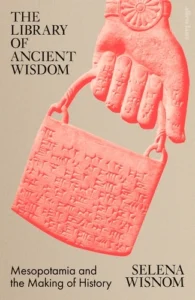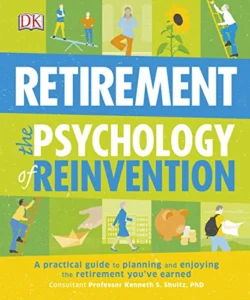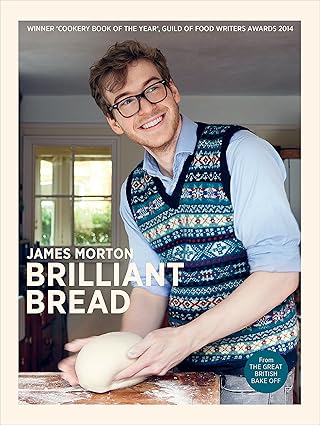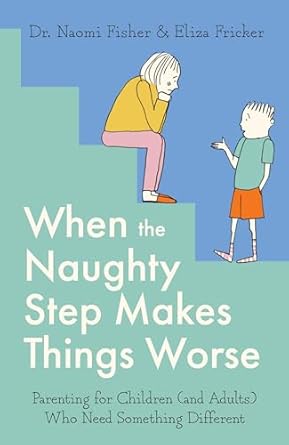Author's posts
Jun 16 2025
Book review: The Library of Ancient Wisdom by Selena Wisnom
My next review is of The Library of Ancient Wisdom by Selena Wisnom, a book I found via a review in New Scientist. It is about the contents of cuneiform tablets, mainly from the library at Nineveh close to Mosul in modern day Iraq. The library at Nineveh was compiled under the direction of King Ashurbanipal who ruled Assyria from 669BC to 631BC. The library was sacked in 612BC by the Babylonians. Cuneiform is a script written by impressing a stylus on wet clay tablets to produce wedge shapes. The clay tablets make an excellent preservation medium particularly when the library containing them is burnt, thus firing them. The library at Nineveh contained 30,000 tablets from a period of over 1000 years – the Assyrians were well aware of this deep history. In total we have about 500,000 tablets written in cuneiform in the Sumerian and Assyrian dialects of the Akkadian language. The contents of the tablets are very varied; there are works of literature, personal letters, instruction manuals for exorcists, medics, lamenters and even a meeting agenda.
The Library starts with a chapter on the cuneiform writing system, it originated in Uruk in around 2700BC descended from earlier, simple tally marks used in the area as early as 8000BC. Cuneiform is a subtle writing system and scribes took pride in both their “penmanship” and also the way the language was used in this respect it reminds me of the written Chinese language. However, it seems writing had a different status than it has now, many of the tablets in the library and elsewhere appear to have been written out as teaching aids indeed elsewhere the practice tablets of students are found as part of the structure of buildings. Poems such the Epic of Gilgamesh are found in multiple versions and stages of “completeness” as it evolved over time. One gets the impression that Mesopotamia maintained a strong oral tradition but specialists had access to written records.
Subsequent chapters cover different themes (The Power of the Gods, Magic and Witchcraft, The Treatment of Disease, Reading the Signs, Messages in the Stars, Literature, The Waging of War, Lamentation), with each starting with a dramatic vignette followed by a discussion in detail about the elements of the vignette and how they fit into wider Mesopotamian culture. I see from their biography that Wisnom is a poet and playwright as well as an academic Assyriologist, I can see how these vignettes and the wider analysis of cuneiform text is informed by this.
To modern eyes the Mesopotamians are bound up in exorcists, gods, omens, signs in the sky – seemingly highly superstitious. However, these are a pre-cursor to modern science – this is very obvious in the case of astronomy where the Babylonians who kept detailed and accurate astronomical records which allowed them to predict phenomena such as eclipses. More widely the search for omens led to a great deal of observation, and the predictions arising from those observations had a logical, internal consistency. They were building a model of the world but based on what we now know to be largely the wrong underlying data.
I particularly enjoyed the section on extispicy – the art of divination via the entrails of a sacrificed animal, typically a sheep and usually the liver of the sheep. The Mesopotamians were very keen on their extispicy, as a measure of this they had names for five distinct parts of a sheep heart but one vague term for the human heart. They had quite a scientific approach to their extispicy, there were written guides and sometimes multiple people interpreted the same liver to check for consistency. The output of an extispicy was a yes/no answer.
Lamentations form a big chunk of the library, these are ritual chants bemoaning a poor state of affairs to the gods. They have two purposes, one is to appeal to the gods for support after a calamity has happened, the other is to describe a possible calamity to the gods as an appeal not to carry out the calamity. There three types of lamentation: balags, ershemmas and ershahungas the first two of these are named for the instruments that accompanied them whilst the third sounds like a more choral.
The book finishes with a chapter on A Day in the life of Ashurbanipal which acts as a handy summary of the preceding chapters and a chapter on the life of cuneiform and Babylonian culture after the fall of the Assyrian empire – the last written cuneiform dates to around 80AD. Reading the book I was puzzled as to why I had not heard more about Mesopotamia but having finished I realise I had, the Old Testament has strong parallels to Mesopotamian myths as do ancient Greek myths. The signs of the zodiac and the way we measure time in hours, minutes and second come from ancient Mesopotamia.
This is quite a big book but it did not feel like a chore to read it. I was struck by the detail in which we know about Mesopotamian lives – certainly those around the King. There is an extensive annotated biography – perhaps learning cuneiform will make a suitable retirement project!
May 15 2025
Book review: Retirement – the psychology of reinvention by Kenneth Shultz
Once again I am broadening the scope of my reading with Retirement – the psychology of reinvention by Kenneth Schultz. I picked up this book second-hand for only a few pounds from World of Books (link above) which might be counted as part of my retirement financial planning.
I was made redundant a couple of years ago but then worked as a contractor for UNOCHA for a little over a year, finishing at the end of 2024. Last month I turned 55. Potentially I am retired but intend on doing some consultancy work, so this book is very relevant to my current circumstances.
Retirement is divided into six chapters covering the (1) wider context of retirement, (2) early planning for retirement, (3) challenges in the lead up to retirement, (4) the transition from work to retirement, (5) the psychology of retirement, and (6) reinventing yourself in retirement. Each chapter is comprised of two page spreads with their own title, occasionally extending to four pages. The text is broken up into short chunks and is heavy with graphics. There are frequent references to other research, with key figures presented in infographics. All in all it is an easy read without feeling too patronising.
The context chapter talks about how work is often a very central part of our lives. Work is not only important for financial reasons, but also for social reasons and how we value ourselves. Also in the first chapter is a short discussion of the each of the decades of retirement from your fifties through to your eighties, Shultz notes that we are likely to live 10 years longer than our parents. Health plays a fairly prominent role: whilst our health potentially declines in retirement we have more time to address health and fitness issues.
For me the chapters on early planning and the lead up to retirement are a bit late and I won’t be alone in that. As many as 50% of people retire involuntarily, often for reasons of caring for another or their own illness, redundancy no doubt plays a significant part too. All of these apply to me to some extent. The IFS has shown that, in the UK, as many as 20% of men at 55 are economically inactive, with a proportion of those indicating they are retired (see page 8, figure 2 in this report).
As we move into retirement a degree of anxiety is not unexpected but often there is a honeymoon period for the best part of a year before boredom strikes. Sometimes this is a bit of a lonely mission – only 20% of couples retire in the same year, women often find retirement more difficult because they have done the majority of housework which they then continue to do in retirement so the event seems a bit of anti-climax.
Many of us hope to do some paid work in retirement, 34% according to one study but fewer – 14% – actually manage it. Not mentioned in this book but my observation from very limited data is that consultancy works for the former employees of larger companies which have some semi-formal scheme for consultancy with their own retirees. Mentoring also gets a mention here as valuable work for the retiree.
Others go for a full-on second career or start their own businesses, perhaps completely unrelated to their pre-retirement career. Volunteering is another option – it has very high retention rates, of 80%, for those that chose to volunteer for things that interest them.
Somewhat surprisingly one of the risks of retirement is the “busy ethic”, throughout our working lives busy-ness is valued and in retirement there is a tendency to try to replicate that. Typically retirees get most benefit from having a four or five hobbies/activities and those that work best are generally those they had some time for prior to retirement.
As stated in the subtitle this book is informed by psychology and there are numerous places where you can evaluate your personal preferences according to a variety of models. For example, in a section on coping with setbacks Schultz talks about fixed and growth mindsets which are informed by cognitive behavioural therapy (CBT).
Although the author is American the research he cites covers at least the UK, as well as the US. There is perhaps an over-emphasis on funding healthcare which belies his home country. This book makes very little mention of financial planning for retirement which is a whole, very large, topic of its own. Schultz mentions that paid financial advice is good for giving you confidence in your retirement plans.
Quite a lot of the fifth chapter is on relationships with other family members in retirement, these can be a bit strained as retirement perhaps puts you together rather more than you have been used to although I can’t help thinking that COVID has changed that, with families forced together full-time for an extended period and working from home more common in the aftermath. Grandchildren and (adult) children are mentioned throughout the book. I suspect more and more families will find themselves in the same position as me as an older parent – my son is 13, so going by our example we won’t have grandchildren for another 30 years and my son is in no position to look after me!
The final chapter talks mainly about the activities you might undertake in retirement including travel, various clubs (some retired friends are trying to persuade me to take up crown green bowling!), gardening, exercise, paid work (as mentioned above), and volunteering. There are some pages on time management and self-assessment here too.
I wish I’d read this book in my forties since a big chunk of the book covers the run up to retirement. It has prompted me to take action, at a leisurely pace, as I enter my first few months of retirement.
May 02 2025
Book review: It’s a Continent by Astrid Madimba and Chinny Ukata
I picked up It’s a Continent: Unravelling Africa’s History One Country at a Time by Astrid Madimba and Chinny Ukata at Waterstones, I was looking for books on Africa – preferably written by Africans – this was one of a very limited selection on the shelf.
The authors identify as British-Nigerian and British-Congolese, you can read a bit more about them on their podcast website here. As they say at the beginning of the book, they are not historians and this is not a history text book. They describe it as a collection of stories you never heard at school which I think is fair.
The book comprises short chapters on each of Africa’s 54 countries (and one disputed territory). They focus on one element of the country’s history – varying between pre-colonial history, the colonial period and post-independence. Often they are focused on an individual, typically they are only a few pages long . They are fairly relaxed in style with the odd sarcastic aside. I can imagine they follow the style of the podcast.
Of my recent reading about Africa, An African History of Africa was a sweeping fairly academic chronological history of Africa which was not really tied to individual countries, and covered the independence movements fairly briefly. Africa is Not a Country is a more thematic book which is focussed on the present. As the author’s say, It’s A Continent is the stories of history we hear at school but for Africa rather than for Britain. It has the effect of making the countries of Africa feel more distinct.
One of the recurring themes was how countries gained independence, this is where the many-country coverage helps because common features arise. The world wars, particularly the Second World War produced an expectation of some payback for the lives and resources committed by the colonies to the war on the side of their colonial masters. Secondly, the US/Britain Atlantic Charter of 1941, which envisaged a post-War future, led to the foundation of the UN in 1945 which had self-determination (i.e. independence ) at its core. Furthermore the colonising forces, generally France and Britain, could no longer afford to manage their colonies. Germany had been forced to give up its colonies (centred around Tanzania, Namibia and Cameroon) in the aftermath of the First World War, they were transferred to France and Britain.
The post-independence pathway shows a rather depressing regularity too with independence heroes either turning slowly more and more authoritarian or being rapidly replaced by despots (often from the army, trained and backed from outside the country). Madimba and Ukata reference this in their glossary, referring to a Coloniser Handbook and a Despot Manual.
It’s easy as a Western European to look down on the imperfect democracies of Africa. However, we have our own share of conflicts in Europe. Since World War 2 there have been three dictatorships (Spain, Portugal and Greece) which ended (early) in my lifetime. Yugoslavia and the Soviet Union have broken up fairly violently, Czechoslovakia seems to have managed to split peacefully but this is exceptional. There are a number of secessionist movements in Europe. The US is currently demonstrating how young democracies are not immune to returning to authoritarian rule. To this Africa has the added difficulty of artificial borders created by colonisers, infrastructure designed to extract resources from countries rather than support its residents, deliberate divide and rule policies during the colonial period and post-independence interference either as part of the Cold War or by the pre-independence colonists.
Reading through the chapters there were a couple of surprises, it turns out that Russia briefly had a foothold in Africa via the town of Sagallo in Djibouti which was “acquired” by Nikolay Ivanovich Ashinov in 1885. Ashinov appears to have been a complete con man and Russia quickly lost Sagallo to the French.
I was also surprised to discover that their are two European cities in Morocco, Ceuta and Melilla which are heavily funded by the EU to prevent them becoming an entry point into Europe for African migrants. Unsurprisingly the Moroccans want them back.
One of the nice things about the book is its universal coverage, so as well as the big favourites like Nigeria, Kenya, Egypt and so forth we hear of the small islands – Comoros, Seychelles, São Tomé and Príncipe, Cabo Verde, the Chagos Islands) and countries like Togo.
I was born in the seventies, I became politically aware around 1980 when the first wave of independence movements had passed and the final few were being completed – the formation of Zimbabwe was one of my earliest political memories. Over my lifetime the news stories from Africa have largely been of civil war, dictators and natural disaster (I’m including famine here, though that is rarely wholly natural). Britain largely sees itself as a fairly benevolent colonial power which is reflected in popular culture. Madimba and Ukata have a very different point of view which I believe is probably correct.
I enjoyed this book, to start with I was a bit put off by its casual style but it makes it rather engaging and readable. I am now curious about the foundation of the UN and its role in African independence movements.
Apr 08 2025
Book review: Brilliant Bread by James Morton
This is the first time I’ve reviewed a book on bakery, or any other sort of cooking. My review is of Brilliant Bread by James Morton.
I was recommended this book by a friend, I like it because it explains why you are doing what you are doing from the point of view of a scientist (Morton trained as a doctor). So, for example, I always assumed that to get a good crust you needed to bake absolutely as hot as you could but in fact to get a good crust you bake slightly cooler for longer which allows for a thicker, crunchier crust to form. I also learnt to wet my fingers before coaxing dough in a bowl, and not to over-flour my kneading surface.
Morton is explicit that he is writing as an enthusiastic amateur rather than a professional. He argues professionals are likely adapting recipes “down” to work in a domestic kitchen. Morton is a runner-up for the Great British Bake Off, so he is somewhat more than an amateur. His writing is relaxed, and readable. In places his extreme youth shines through which I found endearing.
The book is comprised of 11 chapters, three of which are on techniques (kneading/proving and sourdough starters) and basic materials and equipment. Breadmaking requires remarkably little in the way of equipment, this is where Morton’s recent life as a baking student comes into play. He recommends scavenging in skips for baking stones (only suggesting it is best not to use asbestos!). I did a little better than this, scavenging a limestone floor tile as a baking stone from my own garage. A dough scraper is the only essential he mentions; these cost little more than pennies but are definitely worth having. I made much less mess once I started working with a dough scraper. It turns out I had a suitable sharp blade to cut my dough before baking. I am hankering for a cast-iron Dutch oven though. He is similarly relaxed on ingredients, recommending in most cases that you get the cheapest available.
Morton is a big fan of bread making being being quick and easy to fit in around life (principally by pausing things by putting dough in the fridge) and by using no-knead techniques where kneading to develop the gluten network is replaced with just waiting. I quite enjoy kneading, and it seems to work rather better than waiting. I feel delaying proving in the fridge needs a bit of practice, I suspect I need to allow the dough to warm up fully when it comes out of the fridge.
Sourdough has a technique chapter of its own, and rather dominates the second half of the book. Sourdough is bread that is risen using a homemade yeast concoction (a starter). I must admit to being slightly wary of this. It has the air of Tamagotchi for middle-class people who will bang on endlessly about their starter. I think this came out of the early COVID pandemic period where bread flour and yeast were in short supply. My views are probably coloured by a possible intolerance to sourdough (or rather histamines) as a result of long COVID. Anyway, I will probably keep a sourdough starter as a pet for at least a little bit.
The remaining eight chapters are sets of related recipes: basic breads, breads to impress, breads with bits, advanced yeasted breads, sour, doughs to enrich your life, laminated doughs and nearly breads. The “breads to impress” tend to be those of a different form such as fougasse, bagels, pizza, and naan which have some variations in their process from basic breads. Also included in this chapter is “revival bread” which includes left over bits of bread, I’m not entirely sure why you would do this! Advanced yeasted breads are the trickier ones which use wetter, harder to handle doughs and add sourdough starter as a flavour rather than a raising agent. The “nearly breads” range from tortilla and bannock (similar to Irish soda bread) to outright cake (muffins and banana bread).
At the moment I am working my way through the recipes in the book from the start (I’m making a wholemeal loaf as I write). I feel Brilliant Bread has given me the tools to see where I’ve gone wrong and to improve. On my second attempt at the basic white bread recipe I won the accolade of “Best home-made bread I’ve ever tasted” from my wife, so I’d say I’m happy to recommend this book!
Mar 27 2025
Book review: When the Naughty Step Makes Things Worse by Dr Naomi Fisher and Eliza Fricker
Another book in the parenting thread: When the Naughty Step Makes Things Worse by Dr Naomi Fisher and Eliza Fricker.
The title describes the central theme of the book; some children simply don’t respond to the widespread, traditional punishment / reward method of parenting. If you try to put them on the Naughty Step they will refuse to go, and get ever angrier about it. As the authors highlight a motivated child has a higher stamina for opposing your parenting strategies than you have for executing them! You will typically have other things to worry about; a child can fully commit their energies to opposition.
They describe these children as “pressure sensitive” – they are made anxious when they feel under pressure to do something and their behaviour arises from this – finding ways to avoid the thing, elsewhere this is given a diagnosis of “pathological demand avoidance” (PDA). Their answer to pressure sensitive children is “low demand” parenting with the aim of widening the child’s “window of tolerance” for demands over a long period.
Fisher talks about how parenting was “invented” in the 1950s with the work of Baumrind and their demandingness/responsiveness model. It extends behaviourism, which sees animals trained by a combination of reinforcement (reward) and punishment, to the training (raising) of children with the addition of responsiveness which is trying to meet the needs of the child and being emotionally warm with them.
I sometimes wonder what fraction of animals refuse to be trained under the behaviourism model. When I reviewed Other Minds (all about octopuses) I read about efforts to measure the intelligence of three octopuses:
… two octopuses in their study put in some effort to carry out the tests presented whilst Charles insisted on squirting water at the experimenters and being otherwise uncooperative. It does make you wonder whether measures of animal intelligence are more a combination of willingness and intelligence.
The authors refer to behaviourism models of parenting, somewhat tongue in cheek, as Good Parenting(TM). It is relevant to highlight the contrast because much of the internal battle for a low demand parent is the opinions of others, and whether they are right: are we here because we are poor parents? what does my parenting look like to other people? What are people thinking? Largely the author’s prescription is to ignore these outsiders except where necessary (other family members and professionals with important roles).
Thinking about pressure sensitive children it is easy to see how they struggle at school where systems of punishment and reward are becoming ever harsher. Furthermore in a classroom environment there is little scope for responsiveness. Therefore schools end up being strictly authoritarian environments which absolutely don’t work for a fraction of children, and greatly stress a further proportion. My experience of schools is that they have little appreciation or understanding of the existence of pressure sensitive children. Many of the children mentioned in the book have been pushed out of the mainstream school system, some are in special schools or home education.
After the preamble chapters talking about the group of children in question, and earlier models of parenting, The authors spend several chapters talking about different aspects of low demand parenting in practice, communication, behaviours, emotions, and screens. They are pretty positive about screens – highlighting that games like Minecraft offer pressure sensitive children a complex world which they control completely and often it is the only thing they will engage in. Most of the practices of low demand parenting are captured in acronyms – REACH, FLASH, JOIN UP. The core is to throw away your previous concepts of Good Parenting(TM) and seek a more equal relationship with your child (rather than trying to force them into conformance), join them with what they are interested in (for a while my wife and I played Fornite with our son), and focus on the necessary (sitting at the table eating healthy homecooked meals without your elbows on the table may be an ideal but sitting in front of the TV eating beige food is actually fine).
It is a bit difficult to judge the age group this book targets, much of the start feels like a discussion of younger children – at primary school and earlier but there are frequent mentions of children going into adolescence. One of the stories in the final chapter tracks that of my now 13 year old son almost exactly – apparently fine and doing very well in school until the demands of secondary school were overwhelming with an exit into online school.
There is a chapter on self-care for parents, a subject touched on earlier in the book in coping with the disapproving looks of other parents. This chapter uses techniques like radical acceptance, visualisation and mantras which I’m familiar with from counselling.
Despite being over 400 pages long When the Naughty Step… is an easy read. The text is broken up with Fricker’s cartoons, personal stories and various tables and exercises. Each chapter ends with a dialogue between Fisher and Fricker (which I found really useful), a bullet point summary and some suggestions for further reading.
I sometimes worry I have joined the cult of Fisher / Fricker, in common with many parents whose children have not been entirely straightforward to raise, I will enthusiastically recommend their books (and webinars). I think the core of their success is that they identify very clearly how our children are, when few others do, and reassure us that it is not the end of the world, when most are trying to convince us it is.






